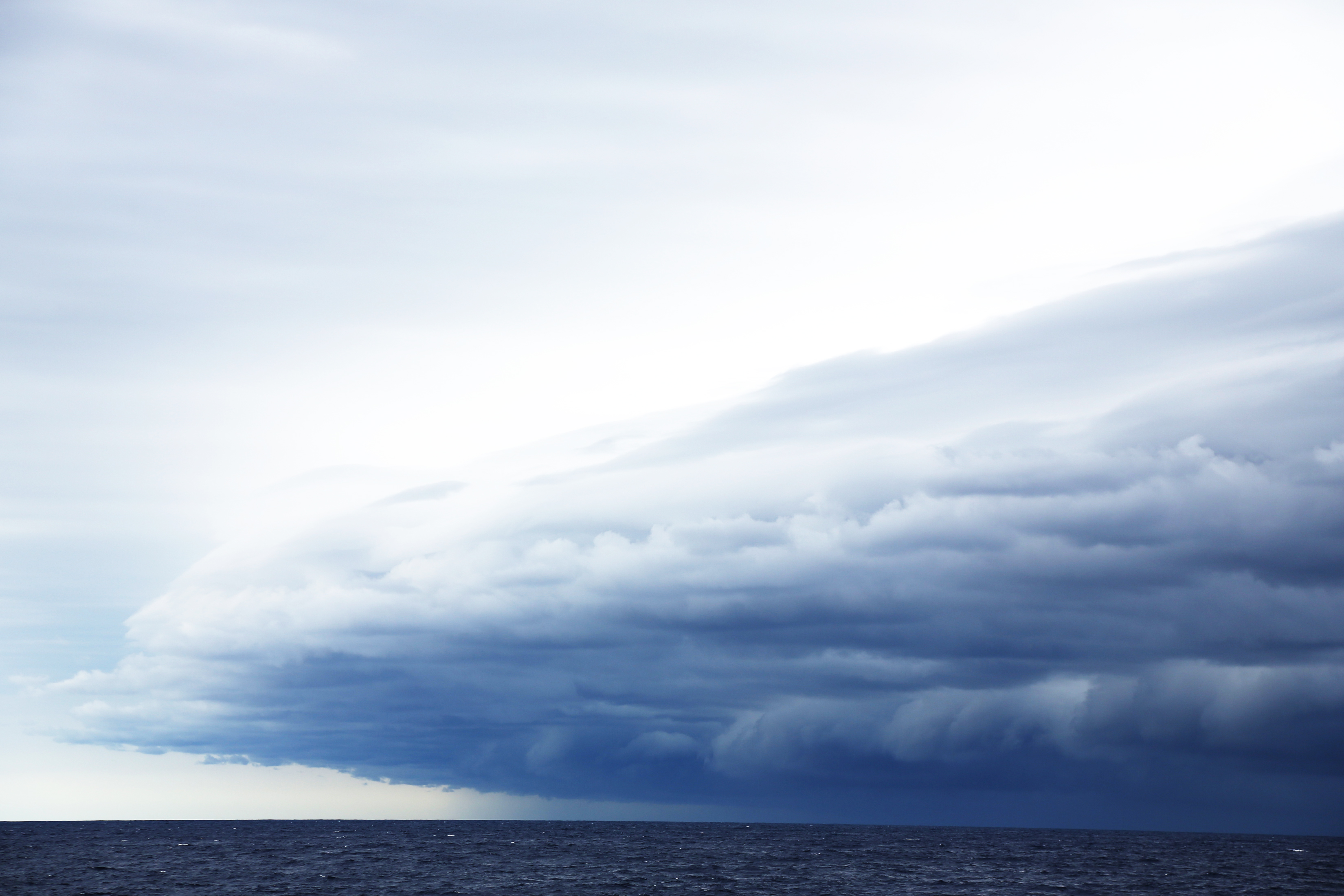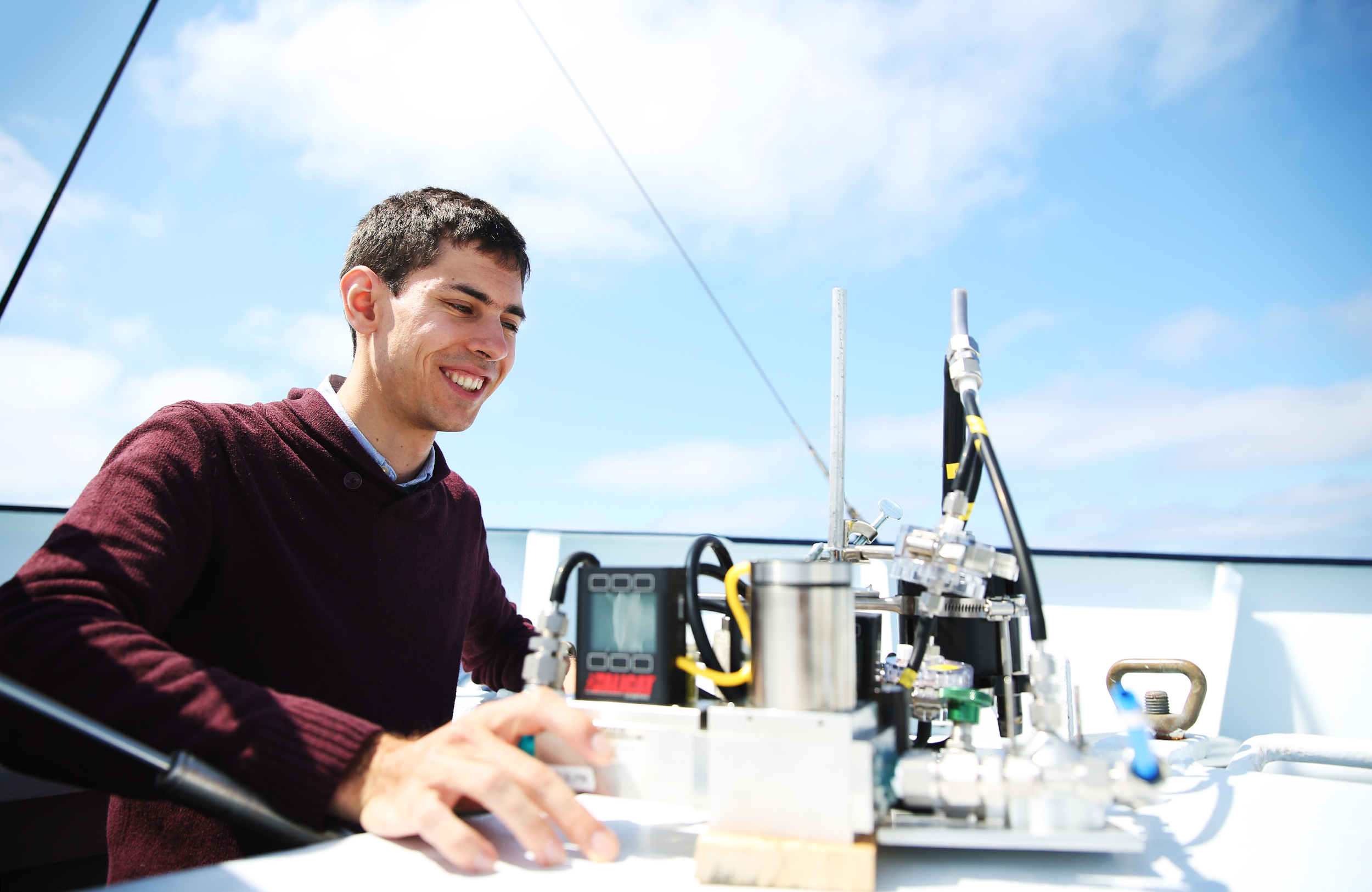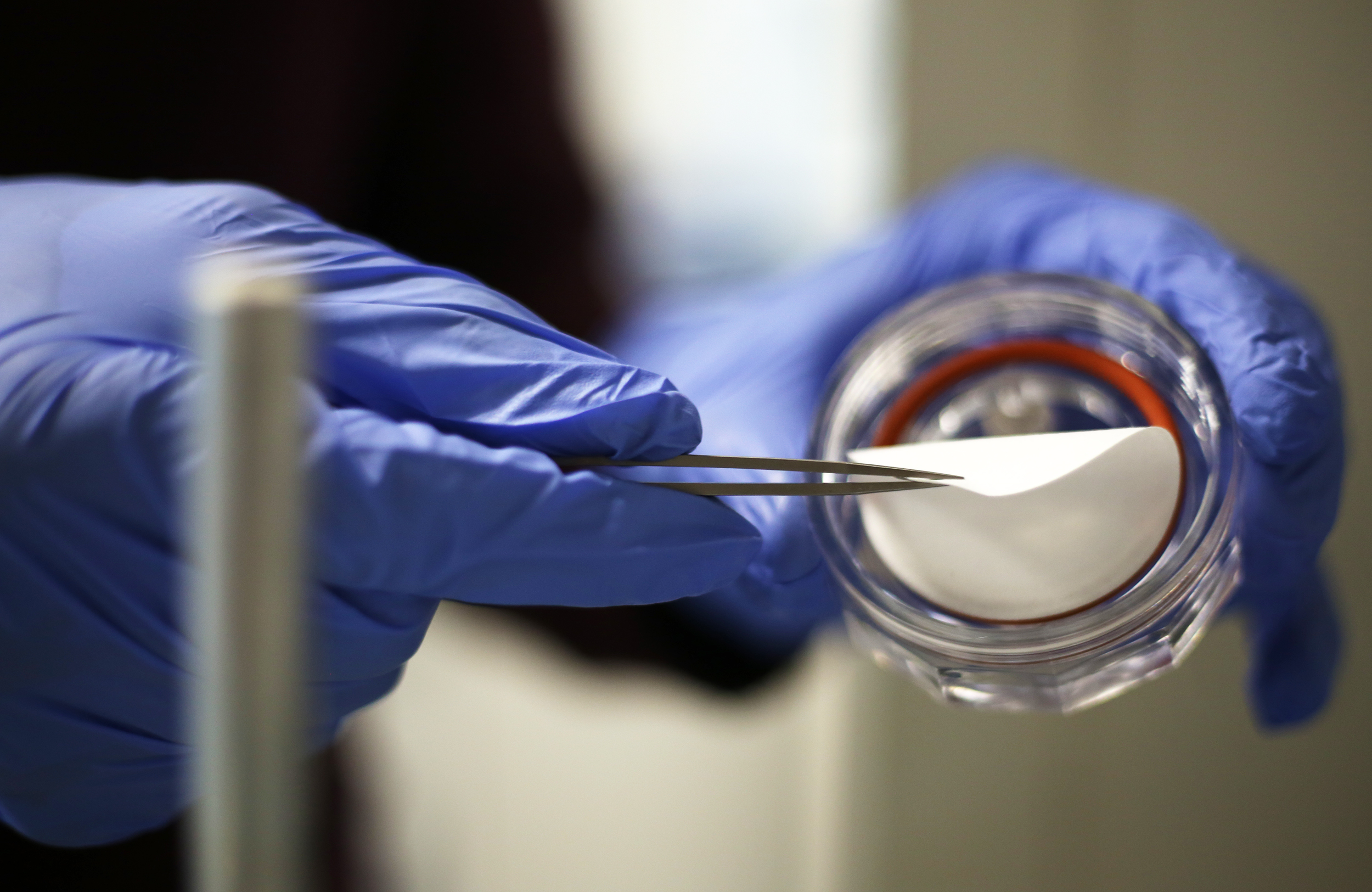Scanning the horizon from the bow of R/V Falkor, I see a massive shelf cloud signaling that a front is moving in. This cloud formed from warm air rising up from the surface of the ocean, cooling, and then its water vapor condensing.
As an atmospheric chemist, I study the forces that form clouds—and the impact those forces have on our climate. One of the biggest parameters (though they are actually tiny) is aerosols, or microscopic bits of dust and salt.

Tiny Bubbles, Large Influence
Sea spray is by far the most abundant aerosol particle in the atmosphere (over 10 million times the mass of Falkor is emitted each year!) and it likely affects cloud formation across the planet’s skies.
When a wave breaks, it pushes down thousands of tiny bubbles. As they rise back to up to the surface, these bubbles collect organic molecules and eventually pop—ejecting thousands of tiny particles (a hundredth the width of a human hair) into the sky. These “sea spray aerosols” travel high up into the atmosphere, where they can influence the ways clouds form, precipitate, and reflect sunlight.
When clouds reflect sunlight back into space, it has a cooling effect on the planet. Therefore, understanding why and how clouds can be so reflective is an important part of climate science. At the center of each snowflake and raindrop is a tiny fleck of dust that trapped some water from its vaporous phase. We call this process of cloud formation “nucleation.” For example, ice nucleation creates larger cloud particles which decrease its reflectivity and increase its potential for precipitation.

Function, Form, and Filtering
On the Falkor, I am using a homemade aerosol filtration system to collect sea spray particles here in the Pacific. Thanks to our talented marine technicians, we have installed a system of pumps that pull air from the top of the foremast into a small compartment at the front of the ship, where our filters are kept dry and safe from the stormy seas.
I am collecting three different sizes of particles, corresponding to various compositions: organic sea spray, sea salt, and mineral dust. Back at MIT, we will analyze the chemistry of these filtered particles to see if their composition depends on the biology of the water they came from. We will also put some of these particles into our cloud chambers to study the atmospheric conditions they need to form a cloud. How high will the cloud form? Will it rain? Our data will allow climate scientists to better predict how sea spray particle emissions affect how clouds form, reflect sunlight, and precipitate.


